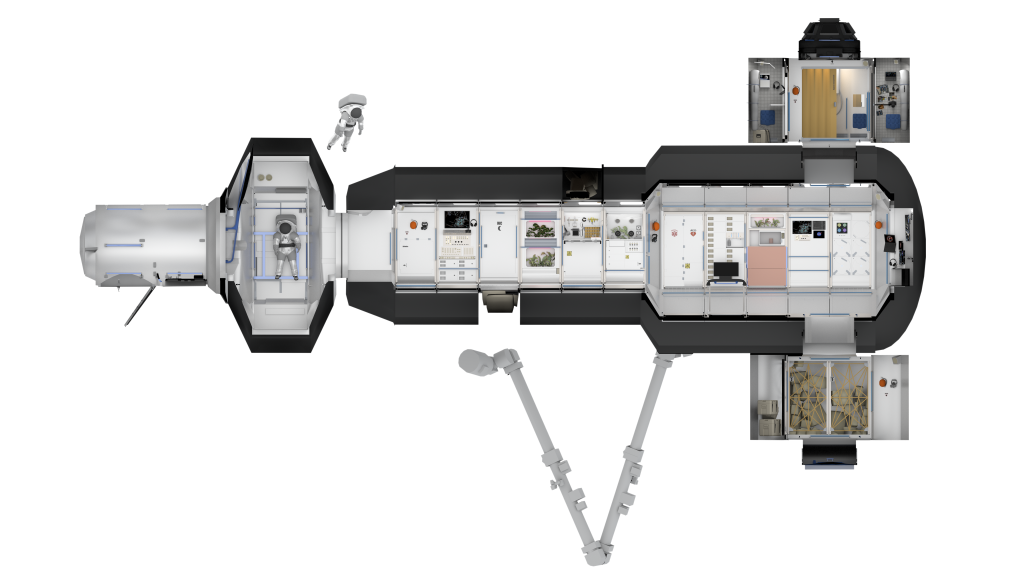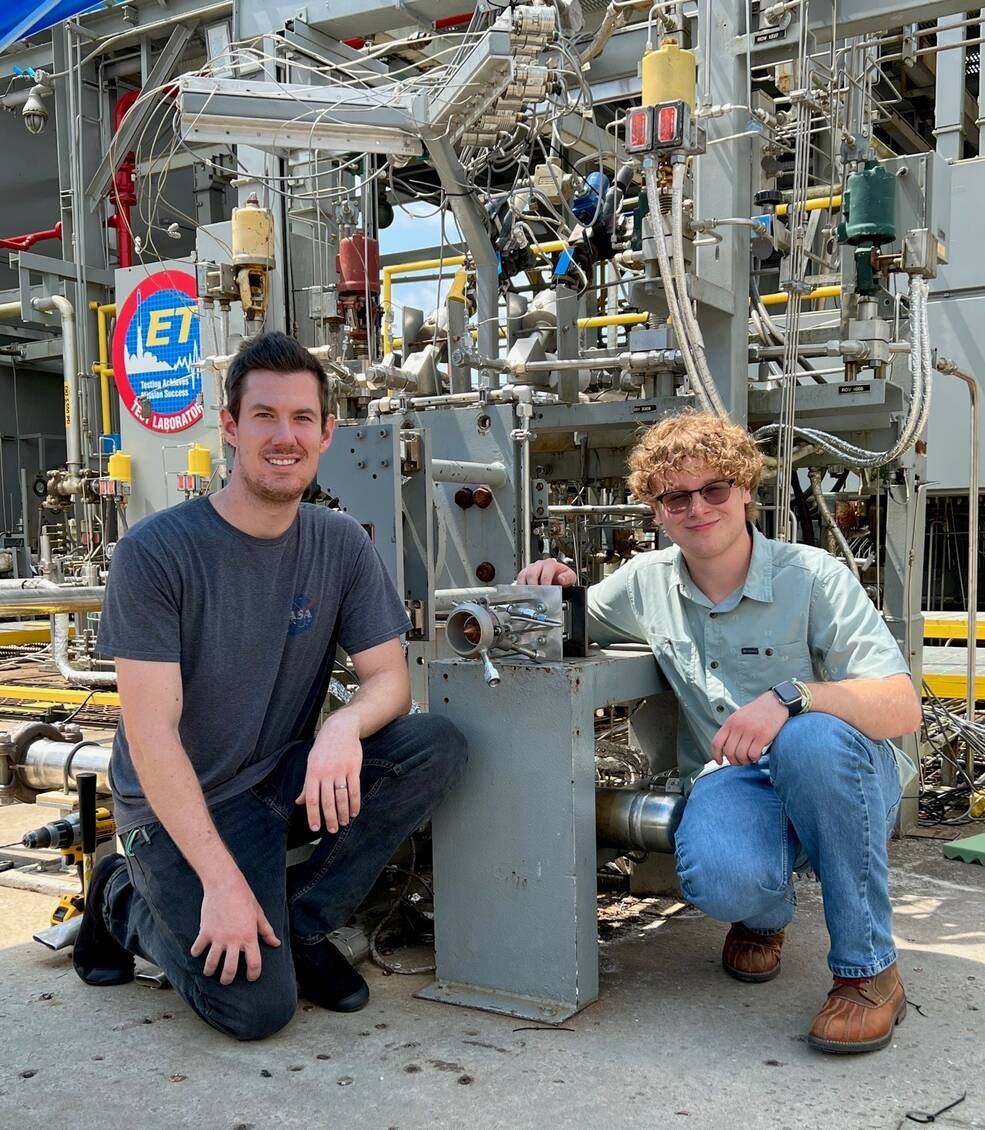By Wayne Smith
A college student in NASA’s Pathways Internship Program designed, built, and tested a sub-scale rotating detonation rocket engine, a sizable contribution to technology that could fuel future space exploration.
A Rotating Detonation Rocket Engine, or RDRE, is an advanced rocket engine design that could significantly change how future propulsion systems are built. The revolutionary RDRE design differs from a traditional liquid rocket engine by generating thrust using a supersonic combustion phenomenon known as a detonation. This design produces more power while using less fuel than today’s propulsion systems and has the potential to power both human landers and interplanetary vehicles to deep space destinations, such as the Moon and Mars.
The technology could also transfer to life on Earth for the benefit of all. In automotive terms, imagine giving the power of a heavy-duty pickup truck to a small four-door sedan while maintaining excellent fuel economy. That’s one of the primary benefits of an RDRE. Such technology in flight vehicles would enable NASA and commercial companies to move more payload and mass to deep space destinations, an essential component to making space exploration more sustainable.
Dalton Luedke, an aerospace engineering student at Georgia Tech, recently completed his internship with the advanced liquid propulsion team at NASA’s Marshall Space Flight Center in Huntsville, Alabama, where he led the design and testing of the sub-scale engine known as MARLEN (Maturation of Additive Really Little Engines). Luedke developed a miniature engine you can hold in the palm of your hand, as opposed to a 10,000-pound full-scale engine, simplifying testing timelines and lowering spacecraft mass.
Luedke’s sub-scale design fueled rapid component development, enabling NASA engineers to assess how different designs impact combustor performance metrics. MARLEN was designed and tested to achieve the broader NASA goal of assessing how these engines scale with thrust class, according to Tom Teasley, a liquid propulsion engineer at Marshall and program lead. He said the biggest advantage an RDRE offers engineers is the ability to design the chamber and the nozzle into a ring-shaped configuration, dramatically reducing the total length of a combustor.
“For an upper stage engine, we’re talking about a reduction of around 70% in length,” Teasley said.
Teasley and Luedke said the project started as an idea and morphed into something much larger than either of them expected. The smaller engine design, combined with Marshall capabilities, streamlined successful testing of 12 unique RDRE configurations, with cumulative firing time at over a minute in duration.
Teasley called Luedke’s development with the novel technology an incredible accomplishment.
“It is basically unheard of for a student engineer to go and do the development on a combustor all by themselves,” Teasley said. “Much less the fact that he was able to do the development, the post-processing, and then fire it before the completion of his internship.”
Both agree the technology has the potential to revolutionize space travel and brings game-changing options for how engineers design rocket engines.
“To be a part of the group of people doing the initial research that will inevitably inform full-scale future designs that will fly one day is exciting because we are the first people learning this new stuff,” Luedke said.
Teasley said Luedke’s work was ambitious, and the success of the project is driving interest in the technology from industry, government, and academia.
“I think we have maybe three dozen interested parties across the U.S. in the technology,” Teasley said. “I’m personally working with at least a dozen (companies) that are taking the technology to market, they are doing the development in concert with NASA, to make the engine system a reality. It’s an opportunity for everyone to gain that knowledge and experience and retain it within NASA so that all industry can benefit.”
Luedke said he applied to the Pathways Program “on a whim” and was surprised to even get an interview, much less an offer to work with NASA. His internship was January through August, and he hopes to return to NASA for his long-term career.
“I was hesitant to start working with the combustion device branch initially because I never imagined I would like propulsion engineering,” Luedke said. “I was never particularly good at thermodynamics, so I didn’t think I would be a good propulsion engineer. Now, I cannot imagine myself doing anything else.”
The Pathways Internship Program offers students and recent graduates paid internships that are direct pipelines to full-time employment at NASA upon graduation. Learn more about the program in this brochure.
To learn more on NASA’s internship program, visit:
https://www.nasa.gov/careers/pathways
Ramon J. Osorio
Marshall Space Flight Center, Huntsville, Alabama
256-544-0034
ramon.j.osorio@nasa.gov


























